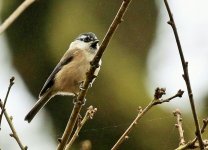lewis20126
Well-known member
Anyway, I am sure that you would prefer to hear from people who have seen Willow Tits with some errant white feathers, which (for the record) I have not.
I seem to recall seeing a partially white Narrow-billed Antwren (Formicivora iheringi) at Boa Nova. That probably wasn't a good sign!
cheers, alan







